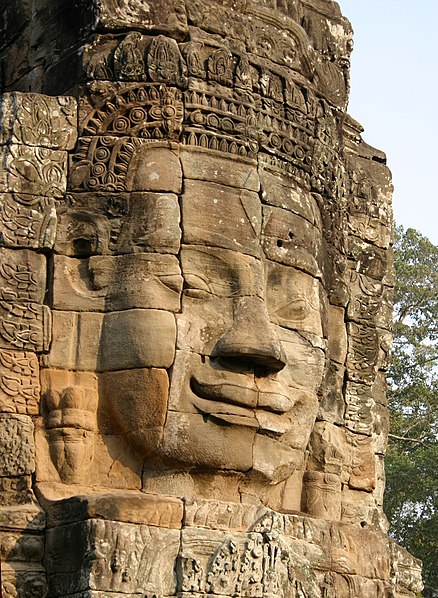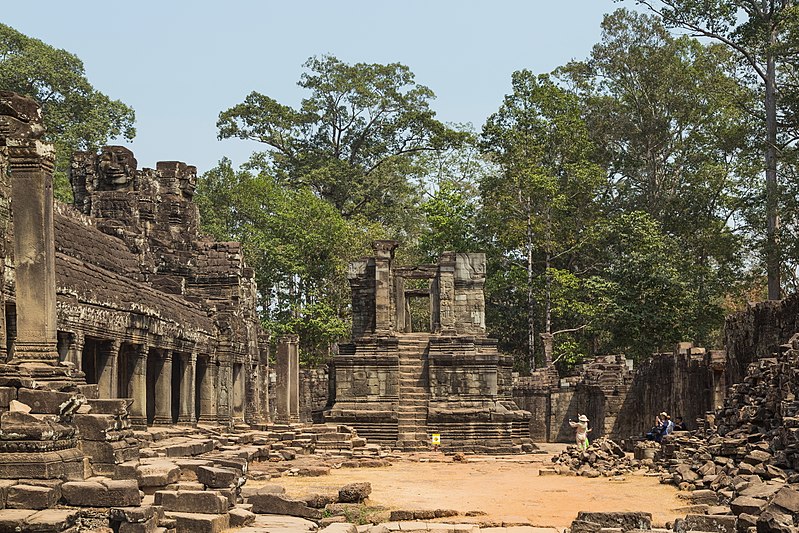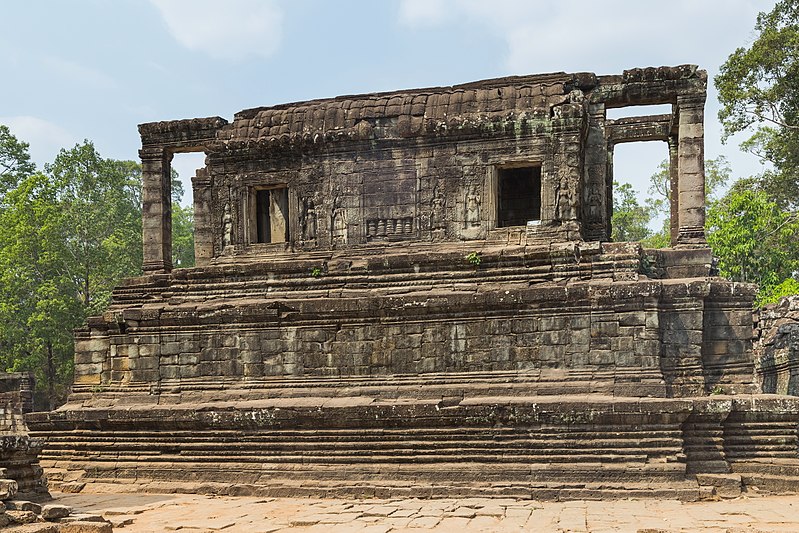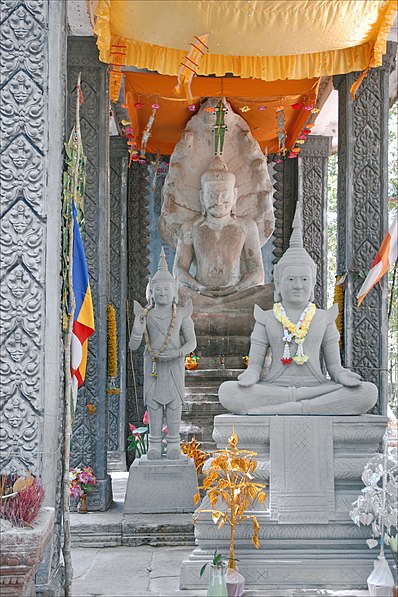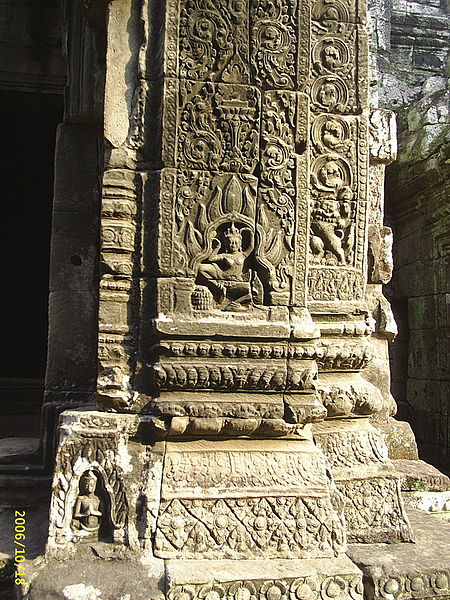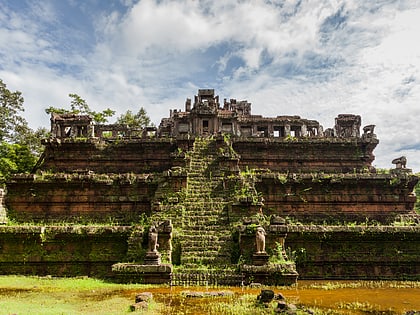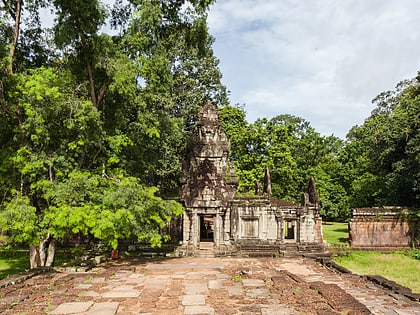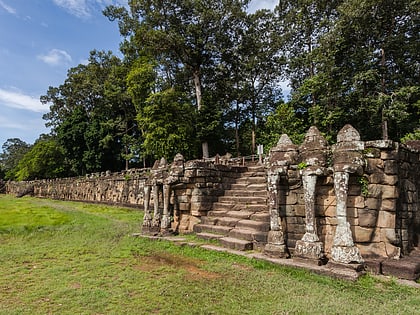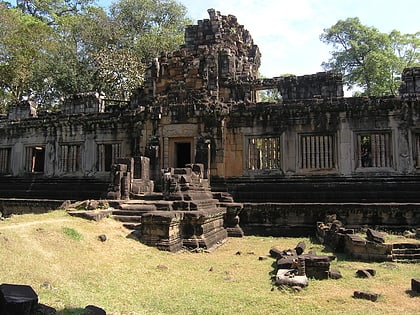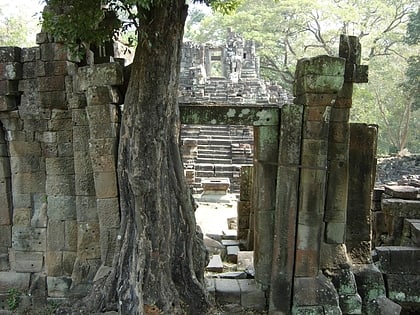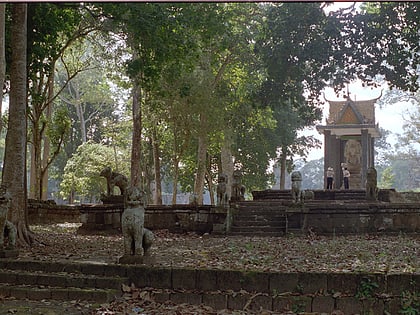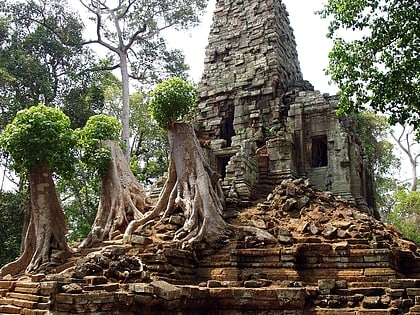Bayon, Siem Reap
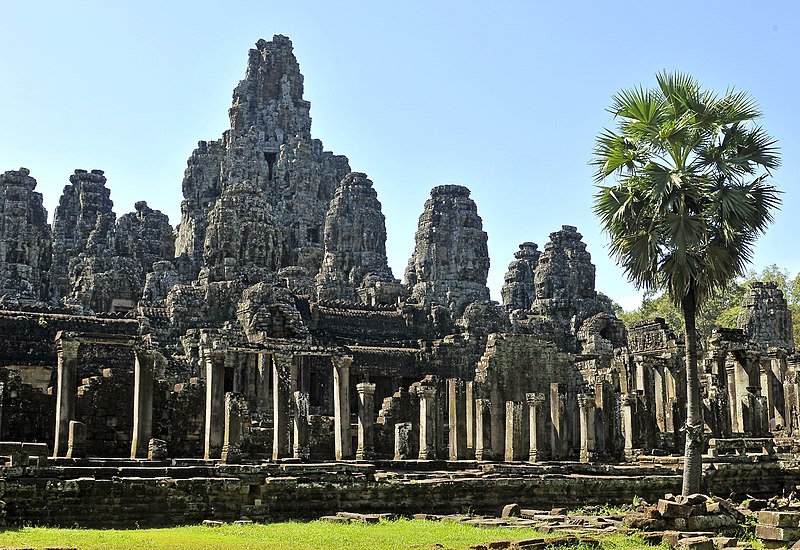
Facts and practical information
In the heart of Siem Reap, Cambodia, the ancient temple of Bayon stands as a testament to the grandeur of the Khmer Empire. This iconic 12th-century temple is renowned for its distinctive architectural feature: the serene and smiling stone faces that adorn its towers, gazing out in all directions. Bayon is the central temple of the vast Angkor Thom complex, which was the last capital city of the Khmer Empire.
Bayon's architecture is a striking fusion of symbolism and symmetry, its bas-reliefs narrating historical events and everyday life of the Khmer people, as well as mythological scenes. Unlike other Angkorian temples, Bayon was primarily dedicated to Buddhism, with elements that reflect the shift from Hinduism to Mahayana Buddhism during the reign of King Jayavarman VII.
The temple is composed of three levels, each one representing different elements of the Buddhist cosmology. The first two levels are adorned with intricate bas-reliefs, while the third level houses the sanctuary and the iconic towers. There are over 200 massive stone faces on the 37 surviving towers, each believed to be a representation of Bodhisattva Avalokiteshvara or perhaps a likeness of the king himself.
Bayon underwent several additions and modifications by subsequent monarchs, contributing to its unique architectural style that includes elements from different periods of the Khmer history. The temple's central tower reaches up to 45 meters in height, offering a majestic view of the surroundings.
Today, Bayon is a must-see attraction for visitors to Siem Reap. The temple complex is open to tourists throughout the year. Early morning and late afternoon are particularly popular times for visits, as the play of light and shadow brings the stone faces and reliefs to life, creating a mystical atmosphere that enchants travelers from around the world.
Bayon – popular in the area (distance from the attraction)
Nearby attractions include: Phnom Bakheng, Baksei Chamkrong, Phimeanakas, Angkor Thom.


